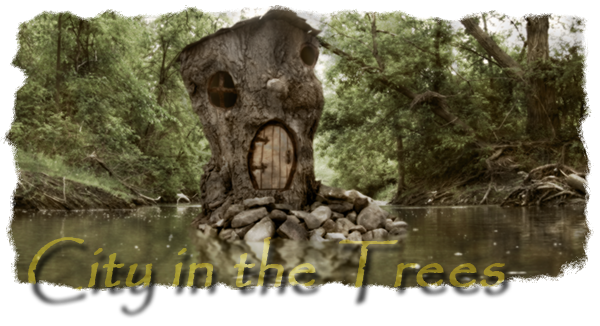You really just never know.
For years now I've been recording, and occasionally chronicling, the replacement of the Dundas Street (Hwy 5) bridge over Sixteen Mile Creek in Oakville. That job is done. The bridge is replaced, the park below it is open. But there were casualties: four of the six supports of an even older bridge than the one just replaced, which had stood naked beside their replacement for sixty years, finally disappeared. Only two of them were kept around for archeological interest.
A little further to the west stands a similar arrangement. Over Twelve Mile Creek (also called Bronte Creek) is another bridge that's stood since 1948, alongside the lost pillars of the bridge it replaced, itself built in 1921 (which itself replaced a remote single-lane pony truss bridge downstream dating to the 1880s, or thereabouts). It's called the Tansley Bridge to those in the know. These bridges seem to come and go in approximate pairs, so my expectation was that, with the Sixteen Mile Bridge replacement over and done with, the 1948 four-lane arrangement at Twelve Mile Creek was now for the chop. Recently I've been past there and noticed construction work, and assumed I'd called the shot.
Not exactly. When I looked it up online to see what the nature of the work was, I read that the old lost pillars of the 1921 bridge, which have stood useless for 65 years, were being repurposed. Halton Region and its civil engineers had determined that they were structurally sound enough to be refurbished and used to carry a water pipeline across the valley. Imagine!
Well, you don't have to imagine. Here are two shots I took from between the bridges, facing west; one in November, 2007, and another yesterday at the end of September, 2013.
It's a silly little thing, I know, but it makes me happy. Pillars that carried the traffic of Dundas Street through the Roaring 20s, the Depression and World War II, have survived hard times over twice as long to come out the other side with a new purpose that might just see them into the next century. Who can say?
Here's a shot, displayed by the Trafalgar Township Historical Society, of the first cars crossing the newly-built bridge in 1921. The view faces east, in the direction of Toronto.
I was out at this bridge twice in 2007, once in July and then again in November, both times with P-Doug. Here are some shots from July...
These shots in particular show the way out to the western abutment of the 1921 bridge. As you can see, no provision was made, either in 1948 or subsequently, to put any kind of barrier up at the edge of the abutment... and there's a trail down to it. I'm absolutely astonished that no distracted kid at play or teenager at a drunken get-together ever plunged off this thing in 65 years.
And below, follow-up shots from November. Nothing much had changed, of course, but with the trees bare, the view of the structures was a little more rewarding.
The bottom couple of shots show the western abutment as seen from the "new" 1948 bridge, looking to the southwest. You can see how overgrown it got over the years. The other shots show views from down in the valley looking east, and views of the pillars of the 1921 bridge as they looked for 65 years.
Now, my expectation was that these old pillars were in for it... that soon, a new pair of bridges here, each bearing three lanes, would arise like they did at Sixteen Mile Creek, and one of them would have to assume the course of the old 1921 bridge, and these pillars would have to go. Of course, as you've seen, my guess was wrong.
I wasn't out there Thursday with P-Doug. I was actually making the acquaintance of a fellow road nerd, Phil, a longtime resident of my old stomping grounds in Mississauga. He too is a fan of recording what is in deference to what was (and what may be), and we decided to go out in the field and talk shop while I followed up on a couple of sites in Halton (the other being the old Ninth Line bridge at Joshua Creek, which I may or may not blog about; we'll see). It was a strange thing to be, for once, the person who didn't have to just imagine what it was like before, but to be with someone who was in the position. Phil hadn't known about the old bridge supports or seen them when they were just abandoned to the elements... he was seeing them for the first time as I was seeing them anew: refurbished, repurposed, rededicated and spruced-up to the nines.
The views that follow show the approach to the new bridge that carries not only the pipeline, but what appears to us to be arguably a pedestrian access route across the valley. The astonishing thing here is that the views you're seeing here are the updated views of those overgrown, tangled, hopelessly lost shots of the approach to the "cliff" of the 1921 abutment, which, I believe, forms the basis of this new bridge as well.
Notice the style of the railings in the shots just above... they've gone out of their way to design railings that match the ones the original bridge here had 92 years ago. Anyone who drove along here in the 30s and 40s would recognize this bridge reborn. I couldn't tell, with the pipeline in place, if the bridge is as wide as it was way back then... it managed two lanes of traffic, just... but I'd have to say it's at least a solid approximation of what used to be there, and that in and of itself is reason to celebrate. Somebody cares, and cares that much. Imagine that.
Above, a view back up the hill, looking westward, away from Toronto. Last time I was here in summery weather, this was a sea of what strongly appeared to me to be poison ivy, although (thankfully) it probably wasn't. But I was sure sweating the idea that it was.
And finally, a shot looking east along the westbound lanes of Dundas Street. I wonder how much longer this bridge, and this view particular to it, has?
Friday, September 27, 2013
Subscribe to:
Post Comments (Atom)


























3 comments:
Hey--Barefoot--Are you OK?
Hi, Bridgewater,
Yeah, just haven't been all that driven to toss much up the board lately. :) Spent most of the summer and fall looking for work and finally found it, but there hasn't been all that much exploring. Maybe I should go over my shots and see if I can't reasonably put something together.
Thanks for being there, in a sense. :D
I've commented before on the appeal of the photographs of overgrown paths that disappear tantalizingly around a curve into the woods or simply peter out into a tangle of underbrush.
Your photographs of abandoned bridges, silent relics of human activity succumbing to the inexorable advance of vegetation, evoke the awe and solemnity one feels at an archaeological site, where a once-great civilization flourished and then died out. Eliot's oft-quoted lines come to mind: "...This is the way the world ends/Not with a bang but a whimper." One's thoughts inevitably turn to our own mortality; we and all that we value, familiar and dear, shall pass away.
OK. Bummer, especially during the holiday season. The point is that many of these shots fit the description of Art--good not only in terms of technical aspects such as composition, but also in that they provoke an emotional response in the viewer. I wonder if you have considered submitting your work to a gallery for an exhibit of bridges past.
Post a Comment